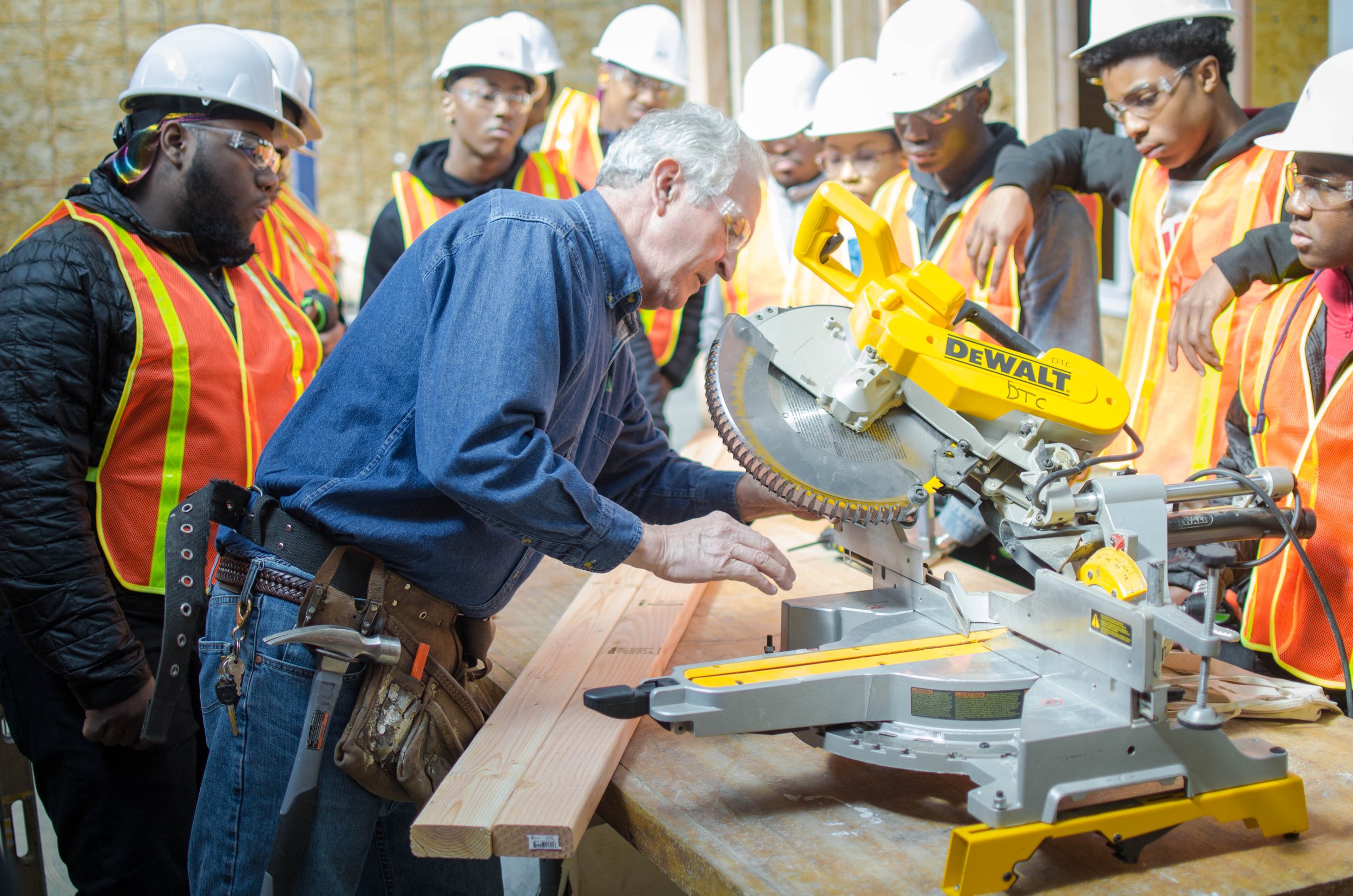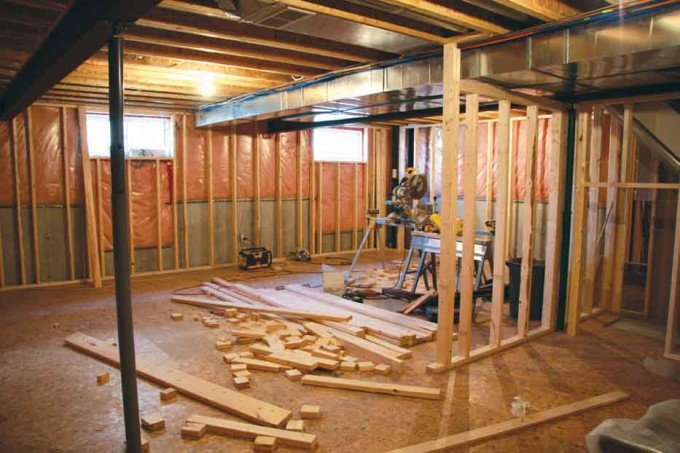Rough carpentry is the backbone of construction, responsible for creating the framework and structure that will support everything else. Whether you're framing walls, building a deck, or putting up a roof, rough carpentry requires precision, strength, and—most importantly—the right tools. For both seasoned carpenters and beginners just starting out, having the correct tools is essential to doing the job efficiently and safely.
In this article, we’ll cover the Top 5 Must-Have Tools for Rough Carpenters and explain why each tool is essential. Plus, if you’re looking to expand your carpentry skills, Detroit Training Center’s Home Renovation Workshops can help you gain hands-on experience with these tools. We’ll also provide links to where you can find these tools at Lowe’s, one of the top suppliers of construction equipment.. This article is sponsored by our Lowe’s Storefront, packed with all the essentials for individual needs.
1. Hammer (Framing Hammer)
A hammer is perhaps the most iconic tool for any carpenter, but when it comes to rough carpentry, you need something heavier and more specialized—a framing hammer. Unlike a regular hammer, a framing hammer is longer, heavier, and often has a textured face to grip nails better.
Why It’s Essential:
Framing work requires a tool that can drive nails into wood with fewer swings, which a heavier hammer head provides.
The textured face reduces slipping, helping to sink nails more accurately and efficiently.
The longer handle gives you more leverage, making each swing more powerful, ideal for working with the dense lumber typically used in framing.
Recommended Product at Lowe’s:
Kobalt 22-oz Smooth Face Steel Head Steel Claw Hammer
This durable hammer is built for strength and speed, making it perfect for rough carpentry tasks like framing and structural building.
2. Circular Saw
A circular saw is a must-have tool for any rough carpenter. It’s versatile, allowing you to make quick, straight cuts in wood, plywood, and even some metals. When you’re working on rough framing or cutting large pieces of lumber, a circular saw will save you time and effort.
Why It’s Essential:
A circular saw can make quick, accurate cuts through various materials, making it indispensable for framing and deck-building projects.
It allows for crosscuts, rip cuts, and even beveled cuts, providing flexibility during construction.
Its portability makes it ideal for jobsites where mobility and efficiency are critical.
Recommended Product at Lowe’s:
DEWALT 15-Amp 7-1/4-in Corded Circular Saw
This DEWALT model offers the power and performance needed for heavy-duty cutting tasks. Plus, its cordless design adds extra convenience, especially when moving around a busy job site.
3. Tape Measure
A good tape measure is the cornerstone of any construction project, and rough carpentry is no exception. Accurate measurements are critical for ensuring that frames are built correctly and to code. A high-quality, durable tape measure helps you get precise measurements for every cut and installation.
Why It’s Essential:
Precision in measurements is key to rough carpentry. Even a slight miscalculation can throw off an entire project.
A tape measure allows you to quickly determine the length of lumber, distance between framing studs, and much more.
Many modern tape measures are built with extra durability, featuring coated blades that resist rust and wear, making them perfect for heavy-duty outdoor use.
Recommended Product at Lowe’s:
CRAFTSMAN HI-VIS 25-ft Tape Measure
This Craftsman tape measure is known for its wide, durable blade and easy-to-read markings. The extra 25-foot length ensures you have plenty of tape for any framing or structural task.
4. Speed Square
A speed square (also known as a rafter square) is one of the most versatile tools for rough carpenters. This triangular tool is perfect for making quick measurements and ensuring that cuts and joints are perfectly square or angled.
Why It’s Essential:
Rough carpentry often involves framing walls and roofs, which requires accurate angles. A speed square allows you to quickly check and measure angles like 45° and 90°.
It can also function as a saw guide, ensuring that your cuts are straight and accurate when using tools like a circular saw.
Speed squares are also handy for marking cuts on lumber and can be used as a ruler for measuring short lengths.
Recommended Product at Lowe’s:
Swanson Tool Co Speed Square
This classic aluminum speed square is durable, lightweight, and has etched measurements that won’t wear off, making it an indispensable tool for any rough carpenter.
5. Power Drill (Cordless)
A cordless power drill is a necessity for anyone working in construction, particularly rough carpenters. From drilling pilot holes to driving screws into lumber, a high-quality power drill will make your job easier and faster.
Why It’s Essential:
Cordless drills are critical for driving screws and bolts into thick framing materials like studs and joists, which is a frequent task in rough carpentry.
The cordless nature allows for maximum mobility, letting you work freely across large job sites without worrying about cords getting tangled.
Many drills also come with adjustable torque settings, ensuring you can use the right amount of force for each task, preventing overdriving or stripping screws.
Recommended Product at Lowe’s:
DEWALT 20-volt Max 1/2-in Keyless Brushless Cordless Drill
This Dewalt cordless drill delivers excellent power for tough jobs and comes with a durable battery that will keep you working through long projects.
Master Rough Carpentry Skills at Detroit Training Center
These five tools are crucial for any rough carpenter, whether you’re a beginner or experienced in the trade. However, it’s not just about having the tools—it’s about knowing how to use them effectively.
At Detroit Training Center (DTC), we offer comprehensive Home Renovation Workshops that teach you how to use these essential tools in real-world construction scenarios. Whether you’re interested in framing, carpentry, or general home renovation, our hands-on classes provide the experience and instruction you need to become proficient in rough carpentry.
Upcoming Workshops:
Basic Carpentry Workshop – This beginner workshop covers the basics of carpentry, including tool usage, framing techniques, and more.
Advanced Carpentry Workshop – For those with experience, this workshop delves deeper into complex framing projects and advanced tool techniques.
Both workshops will give you practical, hands-on experience using tools like those mentioned above, and our expert instructors will guide you through every step of the process. Plus, these skills can open doors to entrepreneurial opportunities, allowing you to start your own home renovation or contracting business.
Conclusion
Having the right tools is essential for any rough carpenter, but it’s also important to know how to use them properly. Investing in high-quality tools like a framing hammer, circular saw, tape measure, speed square, and cordless drill will help you succeed in your carpentry projects. And if you want to build on these skills, Detroit Training Center’s Home Renovation Workshops are a great way to get hands-on training in a supportive environment.
Don’t miss your chance to learn from the best! Sign up for our Basic or Advanced Carpentry Workshops and take the first step toward mastering rough carpentry—and maybe even starting your own business.
Visit our website to register today!

























